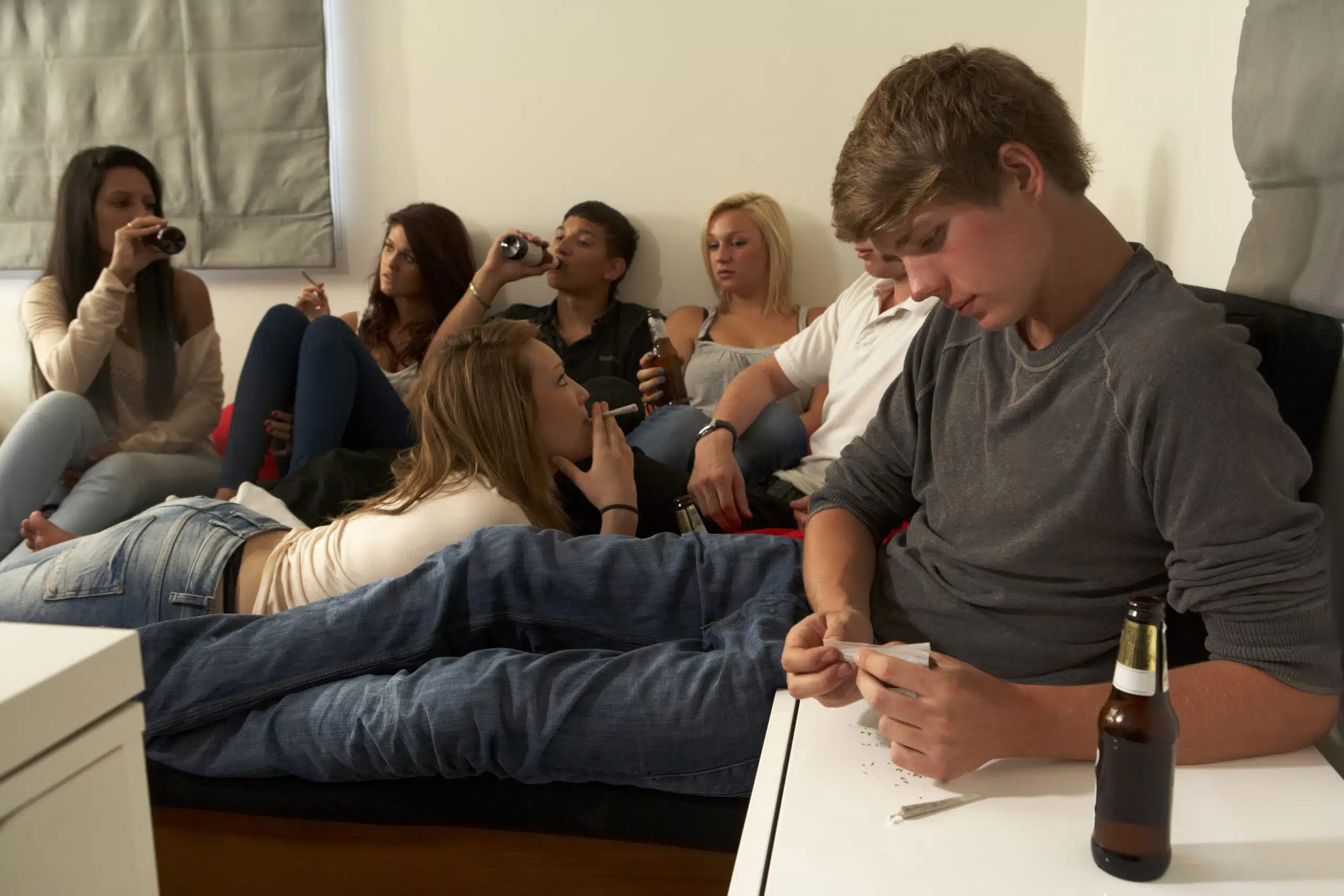
Education and Residential Treatment
No parent wants to admit that their child needs treatment for mental illness. Watching a child suffer from the unrelenting symptoms of depression, anxiety, bipolar disorder, or post-traumatic stress disorder is heartbreaking. But parents who seek help are doing the absolute best thing they can for their child. Sometimes, traditional therapies and medications on an outpatient basis will do the trick.
However, some teens will have more serious problems that require inpatient treatment in a residential treatment center (RTC). For parents of teens who need residential treatment, one of the biggest concerns is their teen keeping up with schoolwork. Between therapy sessions, group sessions, medical exams, and other treatment requirements, it can be difficult for a student in need of inpatient care to even worry about keeping up in school.
For teenagers who need to keep their routine and continue their education while undergoing therapy, a residential treatment center like Beachside can help.
In order to qualify to teach inpatients, a residential treatment center must have proper certification from the state it operates in, hire licensed teachers, and create and execute lesson plans based on the state’s curriculum requirements. In some instances, the educational part of the facility is recognized as a private school.
There are also therapeutic boarding schools (TBs) where students live throughout the year. Often times, the teens are sent to these boarding schools away from the city and state where their families reside. Therapeutic boarding schools are each specially designed to handle certain ages, specific genders, and specific types of problems, from addiction to behavioral problems.
One very specific difference between RTCs and TBs is that RTCs are medical facilities that have doctors and therapists on staff, administer psychotropic medications, and monitor medications for adjustments as needed. TBs don’t usually like to administer drugs and children who attend must be stable enough to see their psychiatrist outside of the school.
Typical Staffing and Requirements – Addiction Based Treatment Centers
In any residential treatment facility or therapeutic boarding school, there will be a separate staff for the education portion of a teen’s stay. Most centers and boarding schools will conduct classes for junior and high school level students on a similar schedule that they are used to – 8:00 am to 3:00 pm, for example.
Programs can have anywhere from 5 to 60 students on average, depending on the type of center or school it is, whether or not the facility is co-ed, and what other programs are offered in tandem with therapy and education. Some schools will have licensed counselors, some won’t, and some will have both licensed and lay counselors available. In residential treatment centers where drug and alcohol addiction are key concerns, as many as one-third of the staff will themselves be in recovery.
The number of teachers per school will vary based on available resources and student enrollment. Smaller programs may have only one teacher who teaches across grades, while others may have a full staff of teachers prepared to teach a full schedule of junior high or high school curriculum.
In many cases, prior to a student being admitted to an education program in residential treatment, the student must be accepted as a patient. Some schools require 30 days of sobriety before admission, others will simultaneously accept a student who is beginning treatment with their admission. Each facility will have its own rules, but it is common that students must be willing to pledge that they will be honest at all times regarding their treatment and sobriety.
In residential treatment programs that do not have an addiction/sobriety component, the rules are different.
Inpatient Treatment for Mental Illnesses
In 2015, 271,000 children ages 12 to 17 were treated for mental health issues at residential treatment facilities. Fifty percent of all chronic mental illness begins by age 14, and 13% of American children between the ages of 8 to 15 will be diagnosed with a severe mental disorder, according to the National Alliance on Mental Illness (NAMI).
More kids in America have psychiatric disorders than have diabetes, cancer, and AIDS combined. For those with the worst conditions, residential treatment centers are the best option to keep them safe, ensure they get treatment, and help them stay out of trouble with the law.
However, it’s unfortunate that families who have no choice but to send their child to residential treatment centers are oftentimes judged and misunderstood. Mental illness, which is so unmentionable, creates even more stigma for its youngest victims. Doctors sometimes don’t want to diagnose psychiatric disorders in children. School systems and law enforcement agencies don’t have the resources to deal with kids who can be violent and erratic. Too often, these systems blame the parents.
These kids are in need of continuous supervision by medical professionals in a residential treatment facility. When they arrive, they are academically evaluated to determine not only where they stand in terms of coursework, but also what elective work might be of interest to them. One way to bring a child comfort when away from home is to engage their interests academically.
Most children are stabilized and able to return home relatively quickly (6-12 months). However, for some, long-term treatment is necessary, and education becomes a part of their routing within the residential treatment center.
Long-Term Residential Treatment
Teens with severe emotional, behavioral, or psychiatric issues may benefit from long-term residential treatment. This is generally considered treatment that lasts six months or more. Even though not every program is the same, most long-term residential treatment centers offer highly-structured programs for therapeutic support of each teen resident. There are many benefits to the long-term treatment option, both in mental health treatment and in education:
- A collaborative environment where trained therapists, psychiatrists, nurses, residential staff and others meet regularly to discuss the individual needs of each student.
- A supportive structure that helps teens manage daily life tasks such as academics, taking medication, practicing good self-care, etc.
- Individual, family, and group therapy sessions that foster growth and understanding and promote healing.
- Students are able to learn personal responsibility as they see how their actions impact others around them.
- Students learn to support one another.
- Students are encouraged to adopt positive values that give them a framework for healthy living.
- As residential treatment programs are intensive and structured, students can achieve long-lasting healing that may not be possible for them in traditional outpatient therapeutic settings.
- Some studies suggest that long-term residential treatment leads to lasting change more often than outpatient therapeutic settings. This is likely due to the structured nature of these programs; for example, taking medication regularly or attending weekly therapy sessions is much easier when it’s a required part of a daily routine.
- Many long-term residential treatment programs also provide resources and help for the transition back home as this can be overwhelming. Transition resources may include in-home visits, outpatient therapy, or coaching to help with school/vocational goals, but transition support will vary from program to program.
Look for a program that best matches your teen’s needs, interests, and values. Look for special services that may apply to your child (like gender-specific programs). Always research the programs provided as well as the residential treatment center’s academic plans and curriculum.
Benefits of Residential Treatment with Academic Components
Residential treatment is often the only option when a teen has failed to improve with other less restrictive interventions such as repeated inpatient stays in a brief time span. Residential treatment gives teens a controlled environment, routine, and daily access to the doctors and other care they need. When teens are living at home, it is often necessary to make repeated trips to the doctor, therapist, or hospital to get treatment. This can greatly interfere with a student’s ability to keep up with schoolwork.
One of the benefits of residential treatment programs is the length. The programs range from 10-14 days for a diagnostic evaluation to 3 months or longer for long term therapeutic interventions.
In residential settings, the patient is away from home, living at the facility, often a significant distance away from their family. Sometimes that distance is necessary for the teen to be able to focus on his or her studies. Although family can be a great support system for a teen’s education, if the family dynamic is chaotic, studies will take a back seat in the teen’s life.
Residential treatment affords diagnostic clarification, including in-depth psychological testing, observation by psychiatric specialists, formalized testing, review of historical information on the patient, observation of family dynamics, and observation of social interaction with others. This type of testing cannot be done on a short-term, appointment driven basis. Residential treatment centers can perform these tests over the course of several consecutive days. While these tests are taking place, teens can attend to their coursework on a regular schedule. As the medical team confirms a diagnosis, they can offer the student strategies for keeping up with their academics while getting treatment.
Residential treatment centers also provide professionals in multiple areas of expertise who interact with the patient and then work together to come to a differential diagnosis after a period of evaluation. Most program professionals include physicians, psychologists, teachers, social workers, nurses, chemical dependency counselors, family therapists, dieticians, and other specialty area professionals. Having access to all of these professionals in one location saves the family and the teen time, money, and stress. Having teachers there to work with the medical professionals offers the student access to teachers who have a very good understanding of what they are going through physically, mentally, and emotionally. Teachers in a regular school setting are not necessarily familiar with how to cope with teens diagnosed with mental illness.
Residential treatment programs use a vast array of therapies that are not commonly available in other treatment programs. Utilizing a combination of therapies may be what the teen needs to achieve success. A residential program may be able to combine this with family systems therapy, cognitive behavioral therapy, yoga, equine therapy, holistic approaches, martial arts, community service, academic planning, and testing, etc. Using therapy in combination with education can give the student new ideas about how to approach their education.
Residential treatment allows the teen time to practice and strengthen skills they are learning. Lots of programs are based on the adolescent achieving certain levels of competency. They will progress step by step through a customized program that encourages improved self-esteem, acknowledgment of accomplishments, recognition of effort and gentle re-integration to their family dynamic. The team and teachers can also integrate academic success into this as well. For a teen with mental illness who has struggled in school, the academic programs combined with therapy give them an opportunity to finally achieve in academics.
Educational planning specific to the individual teen’s needs is a great advantage in residential treatment. Adolescents can undergo detailed educational and neuropsychological testing. While in treatment, a plan can be devised and implemented to address any deficits or challenges the teen is facing. The educational team can make recommendations for placement and create an intervention plan for after the teen leaves the facility.

What’s the Schedule Like
Residential treatment program students live at the center 24/7 and experience a typical school day, with supervised after-school homework, social and play periods. They live in a nurturing, family-like setting that fosters positive educational and therapeutic experiences.
Consistency of routine nurtures safety and trust, so the dorms are a safe, comfortable place for students to calm down, reflect, and refocus. With support, students are given the space and time to learn and perfect skills of self-regulation as well as learning age-appropriate life skills, like doing laundry, taking care of personal hygiene, time-management, and the organization of their things.
After classes and therapy, the dorms are a social place that offers opportunities to safely rework and correct how students interact with others. Opportunities for enjoyment and peer interactions are supported by the residential team who coach students through forming and maintaining healthy relationships.
Conclusion
While some parents worry that a residential treatment program might not be right for their teen, the best of these facilities offer the stability, treatment, and education plans that will help their teens recover and learn how to cope with their mental illness outside of the treatment facility.
Here at Beachside, we recognize how important education is to your teen’s healing process while they’re enrolled at our facility. If you’re a parent looking for a well-rounded residential treatment facility for your teen, contact us today to learn more about our facility’s education and treatment programs!




